KAROO DREAMING
The Hotel at the end of a Long Day’s Drive
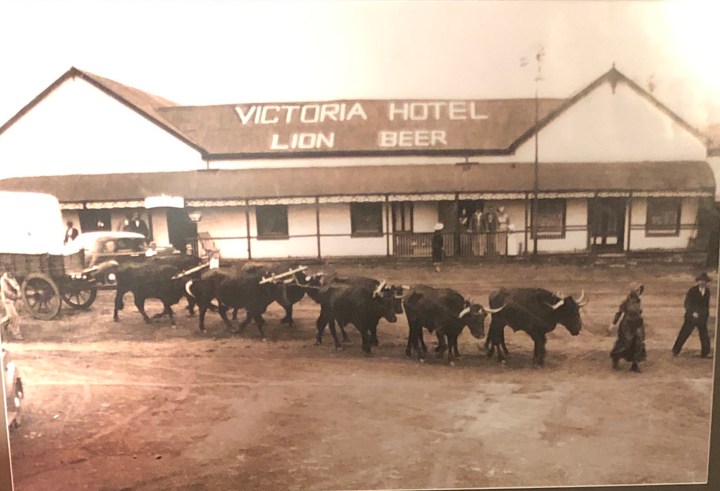
The reps of the Fifties and Sixties drove great big sedans and knew every hotel worth staying in on every long road. They would have stayed in a hotel like this one. Only it wasn’t anything like this in their era.
Reps. Kings of the Road. The company representatives who lived their lives on the road, doing business in small towns everywhere. Lonely hotels in small towns with empty parking bays in front and a desultory palm with its fronds shifting in the breeze. The reps held it all together; their custom could be relied upon. They pulled up at drinks hour after a day on the road making calls along the way, parked in front, checked into a room and were soon in the bar ordering a brandy. Before long other reps had pulled in too, first in front, then into the bar, and drinking and conversation ensued until the dinner gong rang and they all traipsed into the dining room for the five-course dinner; the celery or cream of tomato soup, the poached fish, the sûpreme of chicken or roast beef with vegetables of the day, the Pears Belle Hélène or the Peach Melba, with French vanilla ice cream and a triangular wafer; the cheese board with grapes and preserved green figs.
Those parking bays in front of old country hotels were usually serried but diagonal. The white lines were painted at side-angle to the frontage. The cars looked smarter that way, it showed off their lines; because when these hotels were in their heyday, cars had character and individuality. Ford Fairlanes and Buick Skylarks. Oldsmobiles and Plymouths. Zephyrs and Zodiacs, and a few years later the Corsairs and Cortinas. You wanted to see their lines, their two-tone colours, their shiny chrome trims and growling grilles. By the mid-Sixties many cars had started to become smaller. Morris Minors and Mini Coopers. Humbers driven by men in bowling whites. Austins driven by hockey matrons with stern faces.
My dad loved pulling up at the Masonic in Springbok in our off-white 1964 Ford Cortina GT with the red flash. From the back seat I could see him watching to see if there were any admiring eyes. Who could blame him; he’d waited nine years to be able to afford a car again after he’d last seen the Oldsmobile in 1956 not long after I was born. Owning a new car is a proud thing for a man. It makes him feel more of one. Even if living in Oranjemund meant your car was parked in the serried rows of garages outside the town for 11 months and a week of every year, before you were freed to relish in the vastness of the country.
In every town a hotel, in every hotel a bar, in every bar at least one rep. Up the stairs and into the room with its dark-wood wardrobe, springy bed and enamel basin in the corner, we’d “have a wash” and soon dad would be in the bar, where in no time at all he’d have identified the first rep to walk in and engaged him in conversation; where are you heading, where from, what are you selling, oh I know that accent, you’re from… My father-in-law Phil Cassere had the same habit, I wish they’d met; Phil could fall into conversation with a stranger without blinking, and talk for hours. Jules, my boet-in-law, is the same. Philip Louis Cassere was a legend; ran away from school as a nipper and spent years on the road throughout the land, always up for adventures worthy of Hemingway. In the Fifties and Sixties he was a rep for Atlantic oil and later BP. For years he drove a grey Zephyr everyone called the Grey Shark, for its sharp lines and cool edges, not unlike Phil with his whiskers and Vitalis-slicked hair, back in the day. In the mid-Sixties he graduated to a white Valiant, a favourite choice of thousands of reps; later that was traded in for a shiny new blue one, the car he was driving when I met him before marrying his daughter.

An early Sixties Zephyr like Phil Cassere’s Grey Shark. (Image by Ton op de Weegh from Pixabay)
There’d be two bars in most hotels. The men’s bar, sometimes called a working men’s bar, and the Ladies Bar, where’d there’d be a notice urging you not to be profane lest sensitive feminine ears be offended; to behave like gentlemen, not louts. That would change once we’d waded through the Seventies and into the Eighties and women would no longer accept the status quo. There was no big movement. Women just started walking in to whichever bar they chose. There’s nothing like feet and will to make a change. Phil met Joan years earlier in one such Ladies Bar, in Port St Johns on the South Coast. The Foodie’s Wife’s advent into the world was inevitable from the moment they first saw each other.
The old Victoria Hotel in Hofmeyr must have been just such a place, where eyes would first meet those of itinerant others, lounging on a leather sofa with a snifter in hand, or perched on a barstool. Old photographs show the name painted on the roof; VICTORIA HOTEL with LION BEER below it. You can picture the great cars lined up in front at the end of the day as the sun was starting to sink, the men alighting in their suits or blazers-and-ties, because reps were at work whenever they were on the road, so had to be presentable even on their arrival. Potential clients could be anywhere; you had to be ready. The car is their office, the hotel their home for the night.
That was then, and here we are. In Hofmeyr today, the boer goats traipse across the main road and trot up the three steps to the stoep of an 1860s house to nibble on a neglected plant barely growing in a pot that hasn’t seen water in a while. An unsteady old man shuffles past on his way from nowhere he can remember to nowhere in particular. Teenage girls linger on the kerb, watching the out-of-town car pull up in front of the hotel, wondering what it must be like in there. They can see some hints of what lies within through the windows and the open front door. But the hotel is nothing like it was when they were little girls.
The Victoria Boutique Hotel, in its new guise, is nothing like any other building in town, although not too long ago it was just as drab as the rest of them. But lockdown changed all that. The place had been bought by people with money and eyes open to the potential of the old hostelry, Mariana and Kippie Brandt Louw, out-of-towners who bought it at auction. Then lockdown gave them time on their hands. Months of it. The transformation is phenomenal.
A few months ago, Sandra Antrobus told me about the change at the Victoria in Hofmeyr. Its namesake in Cradock is her Victoria Manor Hotel & Tuishuise, where we’d first encountered Sandra the first time we visited Cradock. Having come from Pietermaritzburg via skirting the northern Drakensberg, passing by the Sterkfontein dam and past Clarens and Ficksburg, then on within spitting distance of Lesotho via Ladybrand and Hobhouse and ultimately to Steynsburg and Hofmeyr, where I stopped to take photographs of the characterful old houses. And the decrepit hotel. That was 1993.
Last weekend we went back, for a special occasion. We’ve been very lucky, having stayed at Claridges and the Milestone in London, the Mandarin Oriental in Hong Kong; which is only to explain that it’s not as if we’ve never seen a fine hotel before. But in Hofmeyr? We walked in and fell silent; stopped in our tracks. Our eyes widened. Because this is what we were looking at…
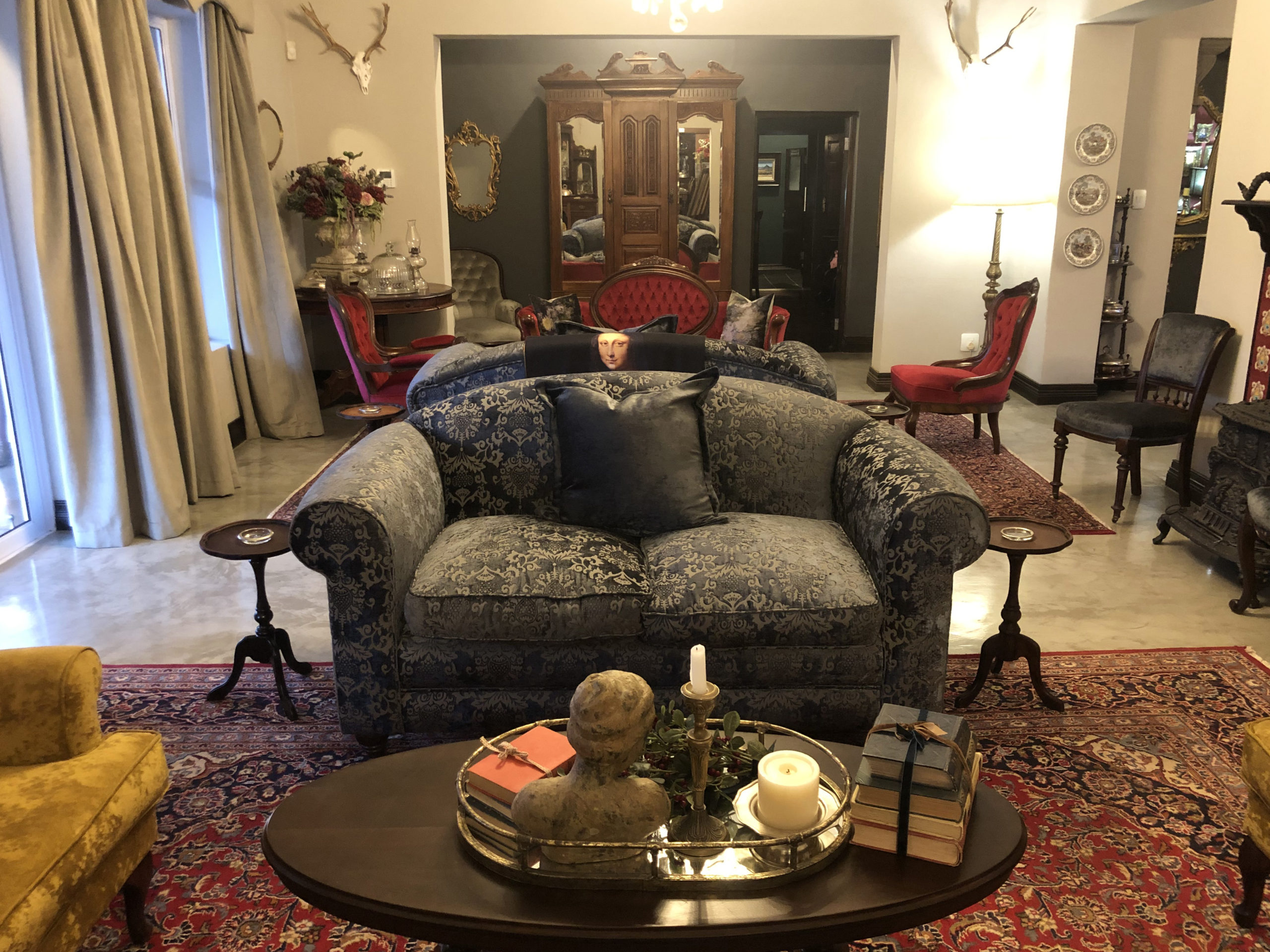
Gorgeously upholstered sofas and armchairs in a lounge leading to reception and the dining room beyond. (Photo: Tony Jackman)
And this…
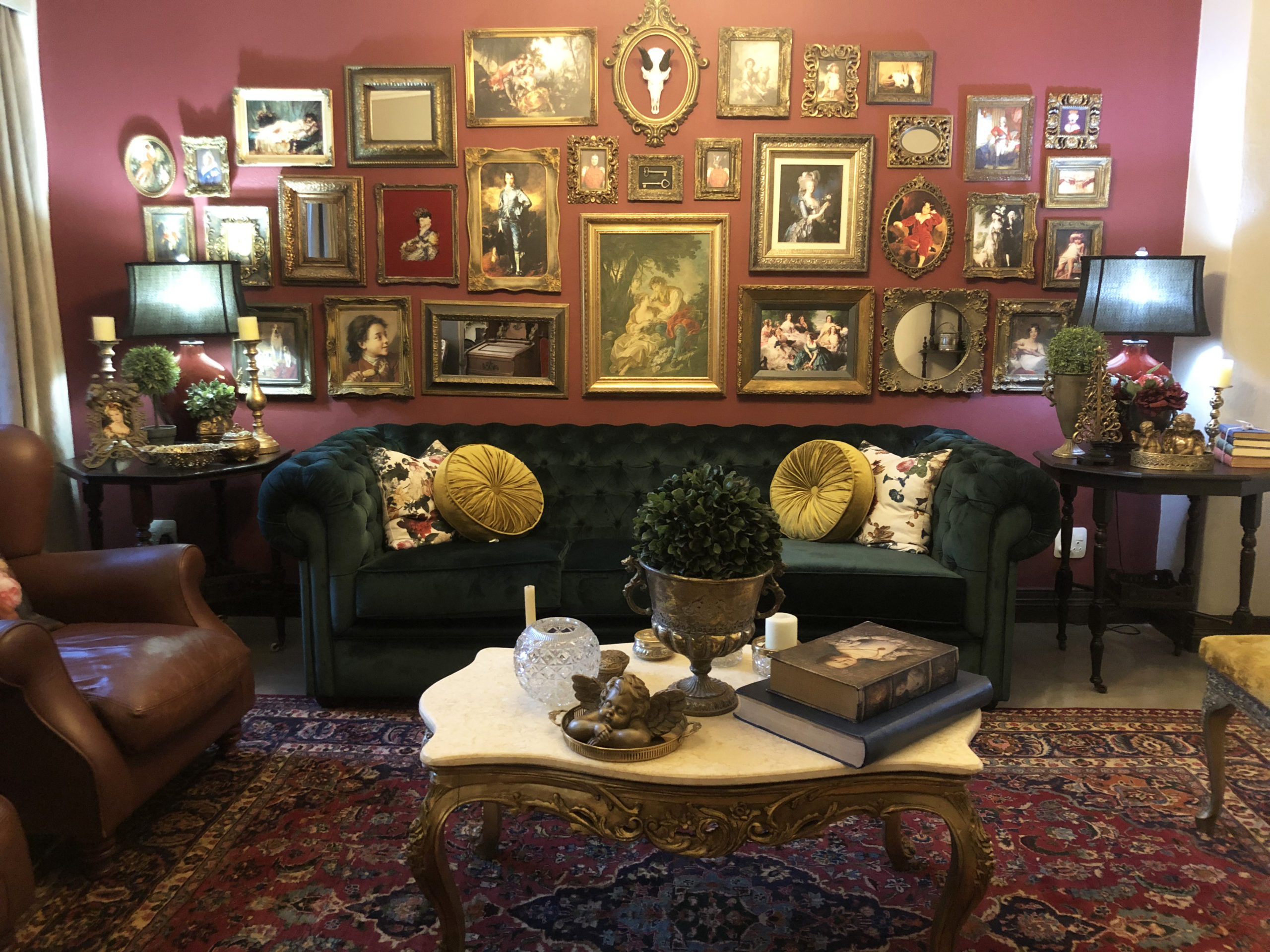
A wall of Victorian portraits, prints and miscellania, each framed individually with eclectic verve, behind a dark teal Chesterfield couch. (Photo: Tony Jackman)

Plush red Queen Anne sofa and armchairs with the entrance to the bar behind it and a slightly perplexed Mona Lisa. (Photo: Tony Jackman)
The place is tiny, as hotels go. It’s almost more about the lounging and dining spaces than the smallish but well-appointed rooms. There are enough antiques to fill a Sotheby’s auction room several times over, enough mirrors to appease the most insatiable narcissist. Persian carpets and expensively-upholstered chairs abound. Victoriana is celebrated in framed portraits and prints, vintage plates and platters cover a dining room wall; a row of silver coffee and teapots line a shelf, purely as decoration. Parker Knoll armchairs, an entire three-piece Queen Anne suite in luscious red, plush cushions, brass candelabra, crystal chandeliers. Somebody wasn’t skimping here.
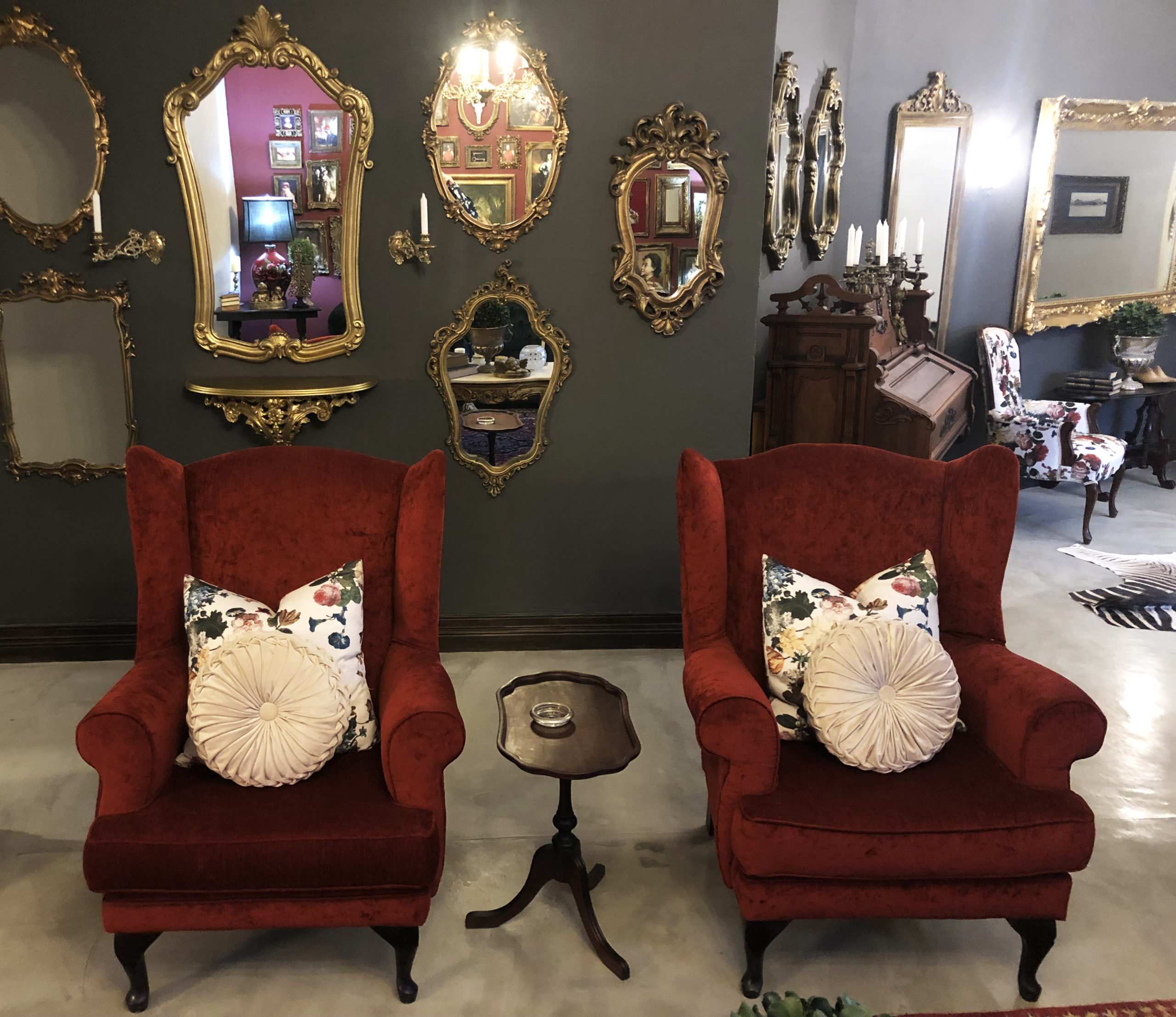
Parker Knoll armchairs and some of the many mirrors. (Photo: Tony Jackman)
There’s interest everywhere; a triangle of springbuck skull trophies above a Victorian fireplace, redolent of the trekbok era, vintage newspaper cuttings on the bar wall, a trio of apothecary tincture bottles on a brass shelf. A period photo of the hotel from an earlier era is framed above an ornate mirrored dresser displaying a silver and crystal decanter set; little piles of vintage books pique your curiosity here and there.
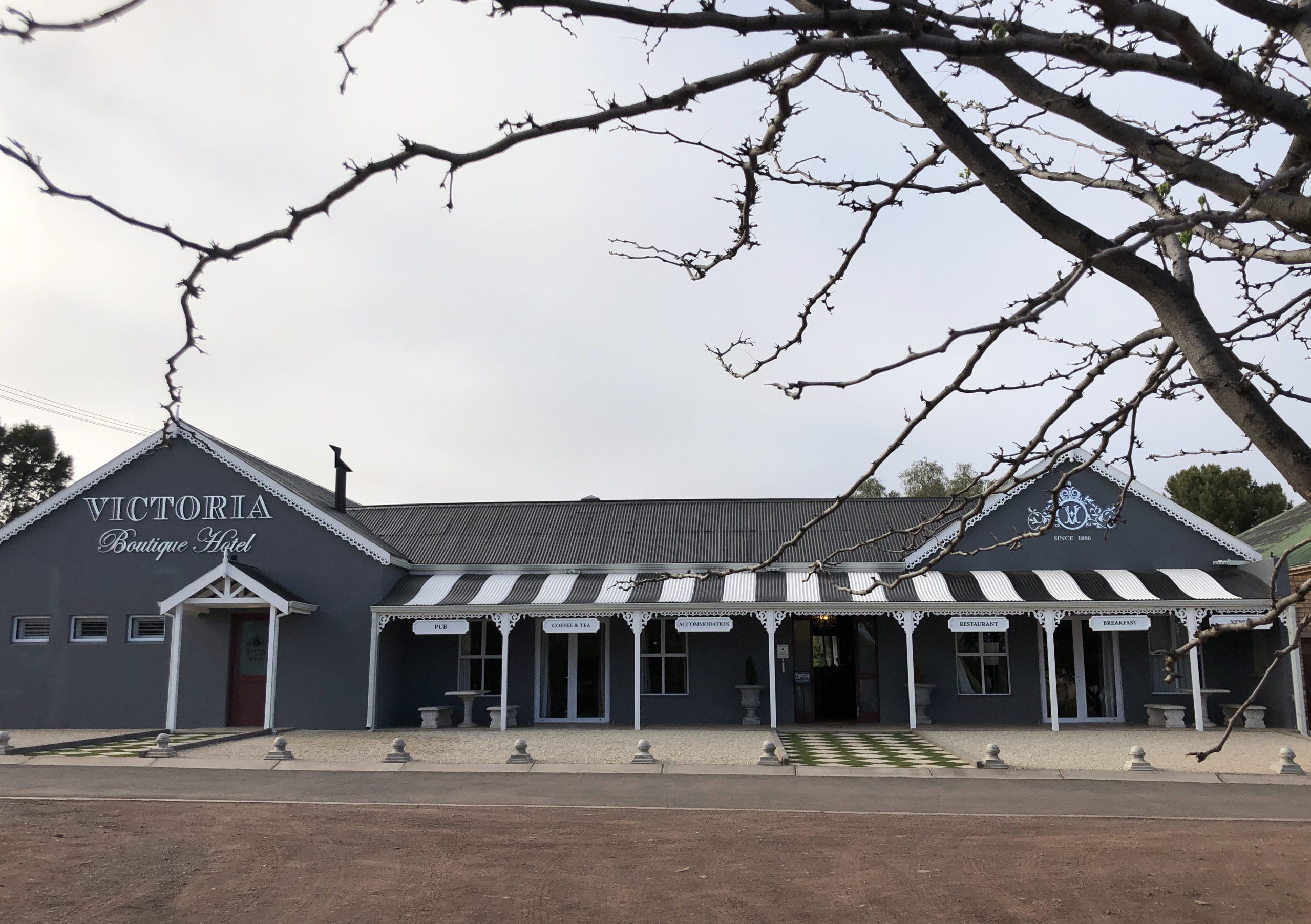
The hotel frontage today. (Photo: Tony Jackman)
Is it all just ’n bietjie “te”, as the grandmother of a friend might have said; just a bit too much? Maybe. But it’s been done with such detail and care (and clearly money) that I think they pull it off.
Our host was manager and chef Jackie Human, who was supremely hospitable throughout; she has that rather too rare thing that not everyone in the hotel industry possesses: genuine warmth and interest in the guest. Too often it’s palpably fake. And she’s a wonderful cook too, it turned out.
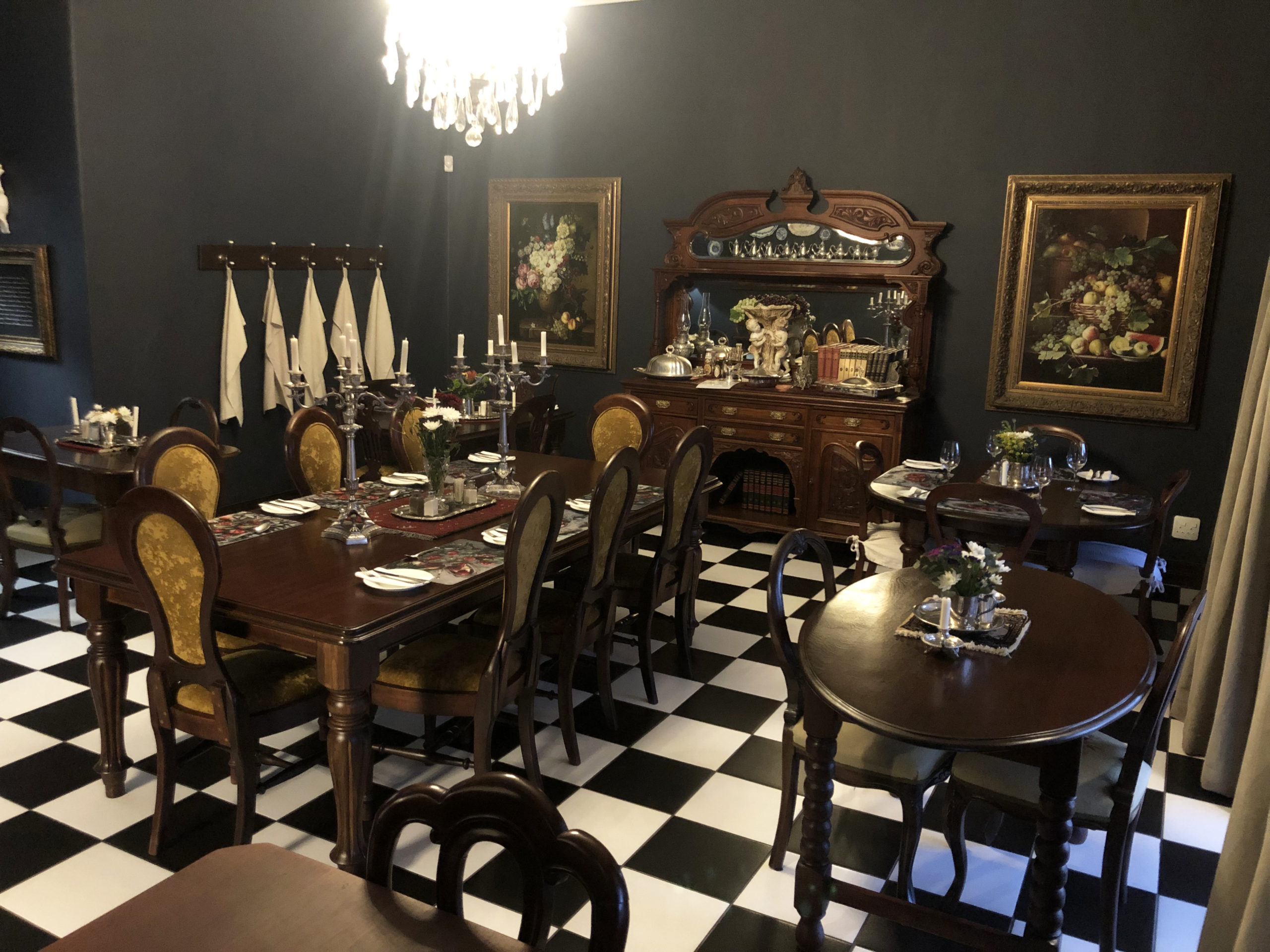
The dining room with our table in the far corner. (Photo: Tony Jackman)
For all of the beauty and curiosity-piquing bits and bobs in the lounges (there are three), my favourite room is the dining room, entered beneath a door with DINING ROOM on a sign above it, just like in the days of the old hotels that the reps on the road knew so well. In reception there’s a (yes, ornately framed) blackboard on which the day’s specials were chalked. I thrilled at the first item: “Leipoldt’s tomato bredie”. Well, that was me sorted. There was a “Rocket Rump” too (with blue cheese sauce, figs and rocket), and a Tipsy Tart to end, that being the older name for Cape Brandy Tart, as it became known in recent decades. She also offers a simple fried calamari starter and it was perfect, and calamari is a bitch to cook. Made her own tartare sauce, nogal.
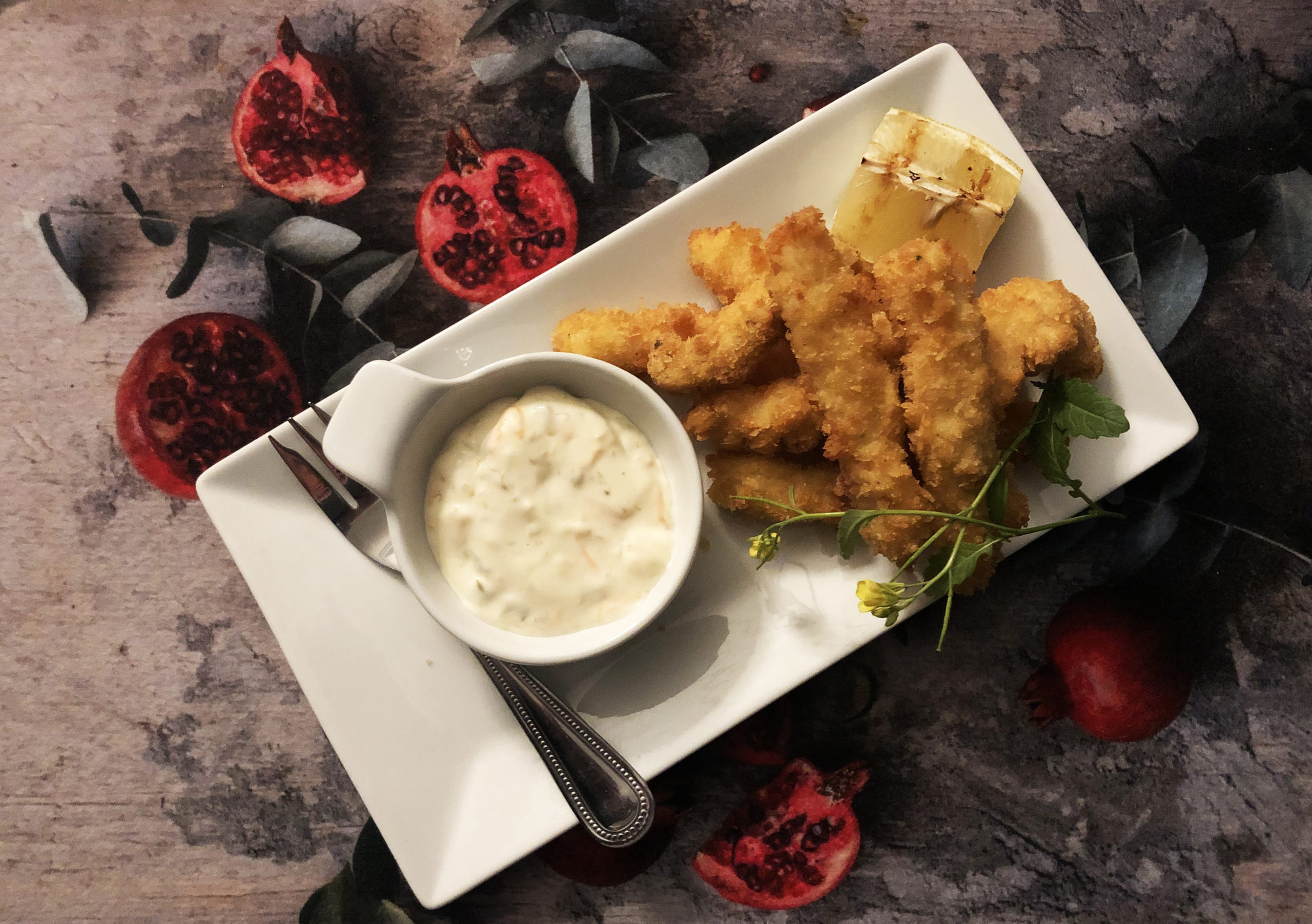
The simple but perfect fried calamari with homemade tartare sauce. (Photo: Tony Jackman)

Leipoldt’s tomato bredie with samp and beans. (Photo: Tony Jackman)
I had a facepalm moment. Down the centre of the room that night was a handsome eight-seater table set for six, for a party that had booked. A pair of magnificent silver chandeliers had been placed at the centre, white candles flickering. Between them was a silver tray set with salt and pepper cellars, a glass of straws and an elegant vase of flowers. The dining room’s pretty pomegranate-motif placemats were set with heavy silver cutlery at every place setting.
The party arrives. The man in shorts and plakkies grimaces and mumbles something to the family. He moves the silver tray, vase of flowers and chandeliers to another table, the family whip off the place mats and plonk them elsewhere. (Cue facepalm.) The only things to survive the culinary apocalypse are the glass of straws and a solitary place mat which is retained and placed in the centre of the polished table for them to put their brandies and cokes and Black Labels on. A younger man orders a pizza which he slides to the centre of the (polished) table so everyone can reach. The rest have burgers. I love pizza, eat it all the time. I love burgers. Even Steers. (I do, really.) But look at the place. Do you go to the Mount Nelson in shorts and T-shirt at teatime and order a coke and a plate of chips?

The long table before the apocalypse. Note the beautiful mounted plates. (Photo: Tony Jackman)
Anyway. There is another sort of unspoken menu, because, as must be clear by now, a lot of their trade is with local customers, district farmers and the like and, yes, the passing reps. Jackie told us that the reps are the core of the business, even if the place is aimed elsewhere; everything about the style and decor makes it clear that it is intended as a destination hotel, or as a posh stop on a holiday this way or that.
Hofmeyr is not on the main arterial routes but there is plenty of traffic between the Eastern Cape Midlands and the skirts of Lesotho and the southern Free State, so if, for instance, we are going from Cradock to Clarens and then on to KwaZulu-Natal, Hofmeyr would be our first stop. For those who like to do an occasional Karoo tour, this hotel really needs to be on your itinerary for a night of luxury and well-cooked, good Karoo kos.
The “Leipoldt’s tomato bredie” that I enjoyed and certain others didn’t? It was brilliant, beautifully meaty and made with fatty mutton, just as it should be. With it was excellent samp and beans and it couldn’t have been a better match.
Checking out the next morning, Jackie and I chatted about our mutual passion for food and cooking. She told me she’s planning to make a green pap breakfast dish soon, the pap made with spinach; I tell her I might be stealing that idea, right after I come up with my own samp and beans recipe. With onions and garlic and thyme and and and… and you’ll no doubt find my recipe for it here one day soon. Life evolves and the food we cook and eat evolves with it. Every day a new recipe, a new way, a new thought.
Now I must light the candelabra and pour myself a brandy and coke. To toast the reps. Not the other guy. DM/TGIFood
Our stay at the Victoria Boutique Hotel in Hofmeyr was entirely at our own expense, including dinner and wine.
To enquire about Tony Jackman’s book, foodSTUFF (Human & Rousseau) please email him at [email protected]
SUBSCRIBE: There’s much more from Tony Jackman and his food writing colleagues in his weekly TGIFood newsletter, delivered to your inbox every Saturday. Subscribe here. Also visit the TGIFood platform, a repository of all of our food writing.



 Become an Insider
Become an Insider
The town could be a stop off point just to stay at the hotel.
Always entertaining and looks like a good place for a stopover.
Looks like an Antique “Emporium” rather than a little country hostelry I’m afraid. The problem with a lot of these establishments. a bit “te” is right Mr Jackman!
Te or no, we wish them the very best for such a brave venture. We will travel again.
PS – did I tell you about the time I visited that hotel, at gunpoint, while trying to hitch a ride from Rhodes to my 21st party in Joburg – which of course I did not make?
You must write a story on that.
The Peugeot 404, the reps car of the 70’s. Every few years would get a new one. For a bit of variety, changed the colour , an amazing machine, just kept going.
such a boring article
I propose a cure: just stop reading when you first discover the boredom, which would be long before the comments section, and leave it to others to enjoy.
And an unnecessarily rude comment. This country is blessed with a plethora of such hotels – Criterion, Queens, Royals and on and on. Some reduced to a mouldering heap, some gentrified, but all redolent of long gone days when “the living was easy”. Thanks for this great article. Growing up in the Karoo, to us children the hotels had a mystique which their re-birth lacks. Your writing caused a wave of nostalgia.
Loved that article. Was a rep for an oil company in the mid 70’s. 25 year old with an expense account and 25 service stations to look after and the open road of the Karoo. Met wonderful people from all walks of life.
Thank you for such a generous and lovingly crafted article.
In 1966 I was based in Queenstown as a rep for a FMCG company. We drove Ford Corsairs which were replaced every 27 000 miles or 12 months whichever came first. I was doing close to 40 000 miles per annum so was required to exchange cars with a PE-based colleague during the year. The description of country hotels; reps cars; one-star hotel dinner menus brought back many memories ~ especially getting stuck in the mud outside Steynsburg!
Enjoyed the article. So glad these jewels are coming to life again.